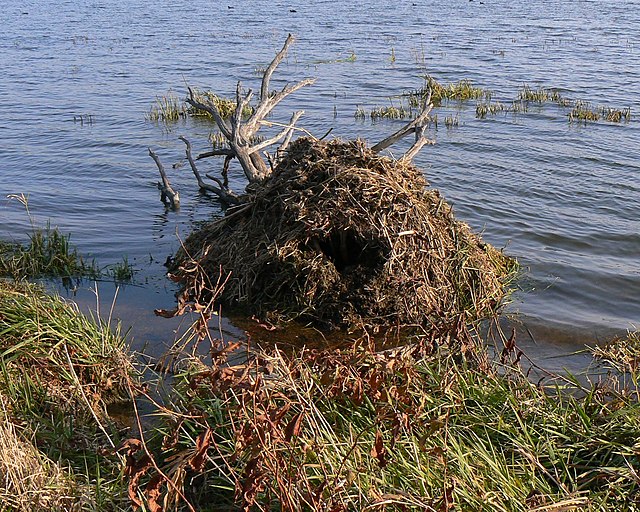The muskrat is a medium-sized semiaquatic rodent native to North America and an introduced species in parts of Europe, Asia, and South America. The muskrat is found in wetlands over various climates and habitats. It has crucial effects on the ecology of wetlands, and is a resource of food and fur for humans.
Muskrat
Muskrat skull
A muskrat eating a plant, showing the long claws used for digging burrows
A muskrat house
In biology, being semiaquatic refers to various macroorganisms that live regularly in both aquatic and terrestrial environments. When referring to animals, the term describes those that actively spend part of their daily time in water, or land animals that have spent at least one life stages in aquatic environments. When referring to plants, the term describes land plants whose roots have adapted well to tolerate regular, prolonged submersion in water, as well as emergent and (occasionally) floating-leaved aquatic plants that are only partially immersed in water.
The common frog, one of the most ubiquitous semiaquatic amphibians in Europe
Atlantic mudskippers, amphibious fish of mangrove swamps and tidal flats
Pachygrapsus marmoratus, a semiterrestrial crab
Hunting stance of Dolomedes minor, a semiaquatic spider








